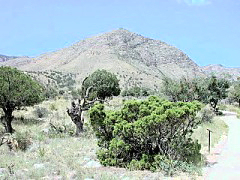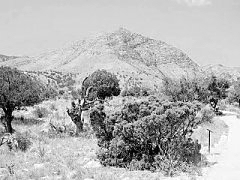

Being called a bird brain usually is considered an insult, yet in several vital ways we are more like birds than like most of our fellow mammals. For about two-thirds of mammalian evolutionary history, the furry folk were small creatures in the land of giants. When you're apt to be squashed or served as an appetizer, the best strategy is to be unobtrusive.
Utilizing the cover of darkness is one way to obtain this life-prolonging state, and most mammals have taken this route. As consequence, hearing and scent were emphasized at the expense of less useful sight. At some point, our ancestors went a different way, taking to the trees. There, the necessity to move safely through the heights resulted in sharpened vision—misjudging the distance to a branch tends to result in rapid improvement to the gene pool through elimination.
With our sharp, color vision, we have converged on the daytime domain
of birds, and both avian and human behavior based on sight is an open book, unlike the
mysterious, mammalian responses to smells beyond our ability to perceive.

![]()
Contributor: Arthur H. Harris, Laboratory for Environmental Biology, Centennial Museum, University of Texas at El Paso.
Desert Diary is a joint production of the Centennial Museum and KTEP National Public Radio at the University of Texas at El Paso.


Color makes a difference. The identical scene (Guadalupe Mountains National Park) is shown in color and in gray. In nocturnal forms with few or no cone receptors in the retina, much of the crispness of the scene also would be lost.
Dominy, N. J., and P. W. Lucas. 2001. The ecological importance of trichromatic colour vision in primates. Nature, 410:363-366.
"Nature" on the importance of seeing red.
Primate Roots of red-green vision.